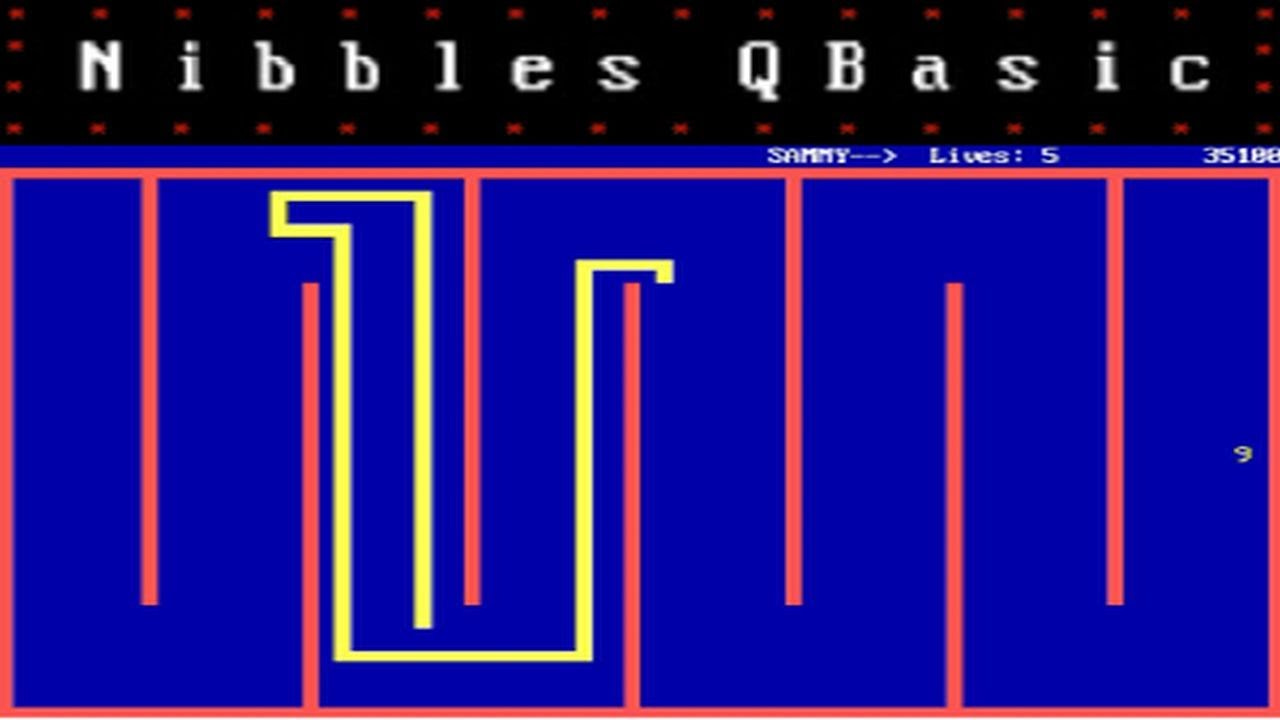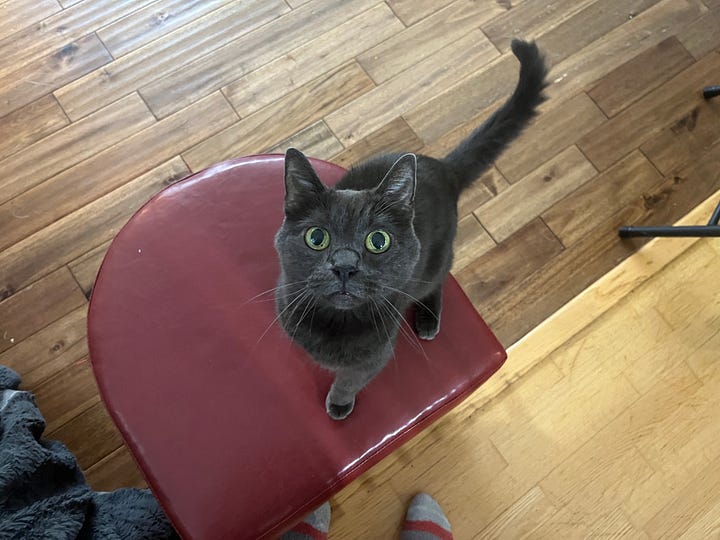Get in the ROFLCopter (#85)
Before anything resembling high-speed Internet, we had to get creative in sharing images.
…a kind of lost and unheralded folk art that was seen as a way
to make their services more fancy and visual. - The New Stack
It was 1991/92. The Cold War was just ending, the Gulf War was just starting, and athletes were still competing under the banner of the U.S.S.R.
Ten-year-old me knew of these things, as much as any kid does in the periphery of the neon-saturated final decade of the millennium. And the first computer our family purchased that spring was reflective of the times.

I was fascinated.
It took about another two years before I broke it and we had to lean on a family friend to format and re-image the machine (a seemingly monumental task in the early 90s and to a blue-collar family that likely scraped together the money for the purchase).
Now, I broke it because of a simple snake game called Nibbles, which you had to load up in the QBasic prompt menu.

After a while, I got curious about this prompt menu, and the DOS operating manuals that accompanied the computer - the thick paperweights still in shrink-wrap in the computer desk - provided sample coding. I quickly realized that I could open other files and see their code.
Like the operating system’s file (autoexec.bat) to boot up the computer.
😬
But, as
would say, though, “Enough of this persiflage.”.:*~*:._.:*~*:._.:*~*:._.:*~*:._Much like in a pointillist painting, up close the symbols look like random little groups of shading. Zoomed out, they reveal a gently shaded and undulating human form – hard code turned soft through creativity.
The Infinite Life of ASCII Art
The graphics of the 386, and its’ immediate successors, weren’t bad (hungry geometric snakes aside). I happily played lots of candy-coloured side-scrolling games on it. When I went to junior high school, the lab computers’ graphics were less desirable, but what they lacked in colour, they made up for in connection (by way of bulletin board systems). And because these boards were linked by less of an “Information Superhighway”, and more of an “Unmarked Information Secondary Access Road”, you had to get a little creative if you wanted to share graphics through the limited bandwidth.
One approach was to juxtapose numbers, letters, and symbols (that no one can easily generate on a keyboard without smashing five separate keys) - otherwise known as ASCII Art. Through ASCII Art, you could render an image that could then be shared relatively quickly to other computers and could also be printed easily on the dot-matrix printers of the day.


It looks deceptively easy, but it is not. It takes an understanding of the “palette” - how the characters take up space to create shades and curves. It’s also recommended you use a “fixed” font with “uniform character width” (e.g., Courier, Monaco).1Being 2023 and not 1991, though, there are nifty generators that are up to the task:


.:*~*:._.:*~*:._.:*~*:._.:*~*:._Is there still a place for ASCII Art (outside nuclear winter destroying high speed Internet scenarios)?
One would think that the art is dead, long replaced by big graphics packages and the rich colour printers now widely available. I’m not sure, though, that any art form really dies (look at the resurgence and evolution of “granny” art forms like crochet). But to the contrary: ASCII art is still found today throughout the Internet and “is still a popular form of creating a distinctive image”.2 Social media shares ASCII-spiced micro art; contemporary artists use the medium to create immersive experiences by way of animations or photo booths.

The place for ASCII is not unlike that of other “low-tech” art tools. We can easily overcomplicate our art and the spaces in which we create by fixating on fancy brushes or high-quality pigments in paints - to only then be paralyzed by ruining or wasting supplies in the pursuit of making our art “perfect”. I’ve mentioned this on here before: We run the risk of making our art too precious.
Instead, “low-tech” art tools can stretch skills and open up the imagination: Forced to only draw with graphite pencil, you have to find new ways to interpret shade and tone that in turn extend into your composition and style. If you only have a sticky note, you have to work with the confines of a small, simple canvas that absorbs inks than an expensive piece of drawing paper. If you only have a computer’s crude characters, you’re similarly limited yet also freed. Simple tools don’t always mean simple results (c.f. MS Paint3).
It also goes to another element of art - the emotion it invokes and the resulting relationship with the viewer. Personally, I find myself feeling admiration that someone can interpret a blank canvas and create detail line-by-line. There’s a sense of nostalgia, too, to a seemingly simpler time of a young 1990s girl, who had a world of possibilities laying ahead of her through a magical box in the family room.
As long as she stopped tinkering with the code, of course.
.(
/%/\
(%(%))
.-'..`-.
`-'.'`-'ddAlso Referenced
Cassel D. (11 Mar 2018). The Surprisingly Rich History of ASCII Art.
Harris E. (11 May 2022). Art 101 or the Art of 1s and 0s: The infinite life of ASCII Art.
National Design Academy. (n.d.). The Artistic Legacy of Microsoft Paint.



Kinda fascinated by this one. My experience at 10 would have been 12 years earlier, a few years before the Commodore VIC-20 became available to homes and there were no computers in schools, especially not my little country elementary school. It wasn't until high school (1985 or so) that we had access to Commodore PET and CBM computers that were extremely limited with basically no networking and no access to BBSes. So I'm a bit jealous of the experience you had, even though it's a far cry from the world(s) my own children could access when they were 10.
Very thought provoking piece: ASCII art is a great example of how creative thinking and hard work can take limited tools and make something amazing. In a way it feels to me that something like Minecraft took a simple toolset but then made it big and flexible enough that you could do some pretty amazing stuff with it. Minecraft blocks look crude up close but if you use enough detail and pull the camera lens back far enough you can generate some amazing stuff.
Awesome post, Bryn - despite it making me feel SO OLD....!!!!!! You've taken me right back! 🤣